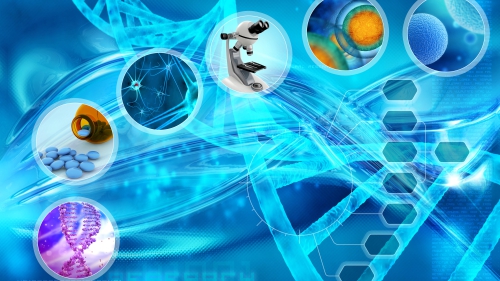Food for Thought: The Alternative Protein Revolution

Protein is the building block of life, and it is one of the three macronutrients from food that provides us with energy. Protein is responsible for bodily functions like muscle growth, cell and tissue repair, immune system response, and hormone regulation. Consequently, alternative protein sources are evolving into a mainstream phenomenon. Much of the rationalization for developing alternative protein products is driven by consumers’ concerns about animal welfare, sustainability, and health.
Alternative protein is a blanket term for a range of products that can work as substitutes for conventional meats. These include cultured, plant-based, and fermented proteins. Cultured meat, also known as cultivated meat, is made from animal stem cells. Plant-based alternative proteins can be made from chia seeds, hemp seeds, nuts, quinoa, soy, and chickpeas. Fermentation-based proteins involve the use of microorganisms for alternative protein production.
According to a press report by Benjamin Morach et al. from the Boston Consulting Group, by 2035, the market for alternative proteins is predicted to reach almost $300 billion. Around this time, alternative proteins are predicted to reach full parity in taste, texture, and price with conventional animal protein. Morach et al. expect plant-based alternatives to achieve parity by 2023, microorganisms-based by 2025, and animal-based cells by 2032. This is due to the fact that the level of investment in alternative proteins continues to increase with billions invested, hundreds of new companies entering the market, and increased consumer demand.
Through novel technology, companies have taken the process of using artificial intelligence and fermentation to produce alternative proteins to the next level. Although still in its infancy, artificial intelligence is used in plant-based protein food production. According to a 2022 FutureBridge article, such technology aims to scale production and processing to meet demands for these products. Artificial intelligence is useful because it helps break down molecules in plants to the degree that databases need to create the right combination of plants so that their texture, flavor, and taste mimic traditional protein. Fermentation is also useful in the industry because it uses microbes to produce ingredients that improve a product’s flavor, texture, and taste.
Alternative proteins are not necessarily better than traditional proteins, however. There are still questions about their nutritional profiles, ingredient transparency, and ingredient quality. According to an article by Kathy Beerman, PhD, for the American Society for Nutrition, dietary proteins derived from animal sources have the highest quality of nutrients and contain well-balanced profiles of essential amino acids. Compared to their traditional counterparts, most alternative proteins have been found to be extremely high in sodium, lacking in key nutrients, lacking in clear nutritional information, and highly processed. In an article for Sight and Life Magazine, Breda Gavin-Smith examined five alternative protein products and found that the sodium level in four out of five of the products exceeded the daily value of sodium found in traditional protein. Among the sample examined, one portion size of one “vegetarian chicken” provides almost a quarter of the daily recommended salt intake, while a traditional chicken typically contains only 4% of the daily value.
Another area of concern is the lack of nutrient density in alternative proteins. Although some of these proteins have been fortified with necessary nutrients, the bioavailability of these fortified nutrients is concerning and continues to be studied. According to the article by Gavin-Smith, four out of five of the alternative protein products analyzed were classified as ultra-processed foods containing about twenty-one different ingredients, including thickeners, colors, flavors, additives, and emulsifiers.
A recent study also lends an interesting look at the comparison of traditional meat versus plant-based meat alternatives in terms of digestion. According to an article by Yunting Xie et al. in the Journal of Agricultural and Food Chemistry, plant-based alternatives were found to weaken gastrointestinal digestive function in mice due to malabsorption more than traditional protein. According to an article by Aneta Popova and Dasha Mihaylova in the Open Biotechnology Journal, consuming large amounts of unprocessed plant foods may have adverse effects on the body due to these foods’ antinutrient contents. Antinutrients are natural or synthetic compounds found in foods like grains, beans, nuts, leaves, roots, and some fruits found in plant-based, raw, or vegan diets. These compounds can interfere with digestion, absorption, or utilization of nutrients in foods and may cause symptoms like nausea, bloating, headaches, and rashes. However, the effects of these compounds may be minimized or eliminated through techniques like soaking, cooking, fermentation, or sprouting.
Alternative protein production may be seen as a scientific breakthrough because these proteins are rich in fiber and short-chain fatty acids and may reduce the risk of obesity, heart disease, high blood pressure, and overall mortality compared to animal-based protein. However, according to Michael J. Lopez and Shamim S. Mohiuddin in an article for StatPearls, unless these protein sources have an optimal nutritional profile, consumption of them may cause an individual to be at risk of nutrient deficiencies. Besides a few exceptions, most alternative proteins typically offer a limited amount of amino acids essential for protein production in the body. Out of the twenty amino acids found in nature, nine are considered essential, meaning that our body cannot synthesize them, and we need to get them from our diet. According to Lopez and Mohiuddin, animal protein is regarded as a single complete source of protein because it contains all nine essential amino acids in sufficient amounts. On the other hand, plants are sources of incomplete protein because the nine essential amino acids they contain do not come from a single source.
Muslim scholars have not yet reached a unanimous conclusion regarding the halal status of animal-based alternative proteins. However, the Impossible Burger, a plant-based protein that is beef-like but made from soy and fermentation, has been IFANCA halal certified.
The presence and bioavailability of nutrients in our food should be of utmost importance. Amino acids are the basic building blocks of protein and serve as the backbone for the neurotransmitters and hormones our body thrives on. While products made with alternative proteins are growing in popularity, certain individuals who consume them may be at risk of not getting the right amount of nutrients from their foods. It is always best to consume nutrient-dense foods and choose healthy ingredients to promote optimal health.
Omolara Funmilayo is the owner of nourishedsupermom.com. She is a certified holistic wellness coach and nutritionist. She supports busy parents by giving them the tools they need for transformation in health and wellness for themselves and their families.
Reprinted from the Winter 2022 issue of Halal Consumer Magazine with permission from IFANCA and Halal Consumer Magazine.
















